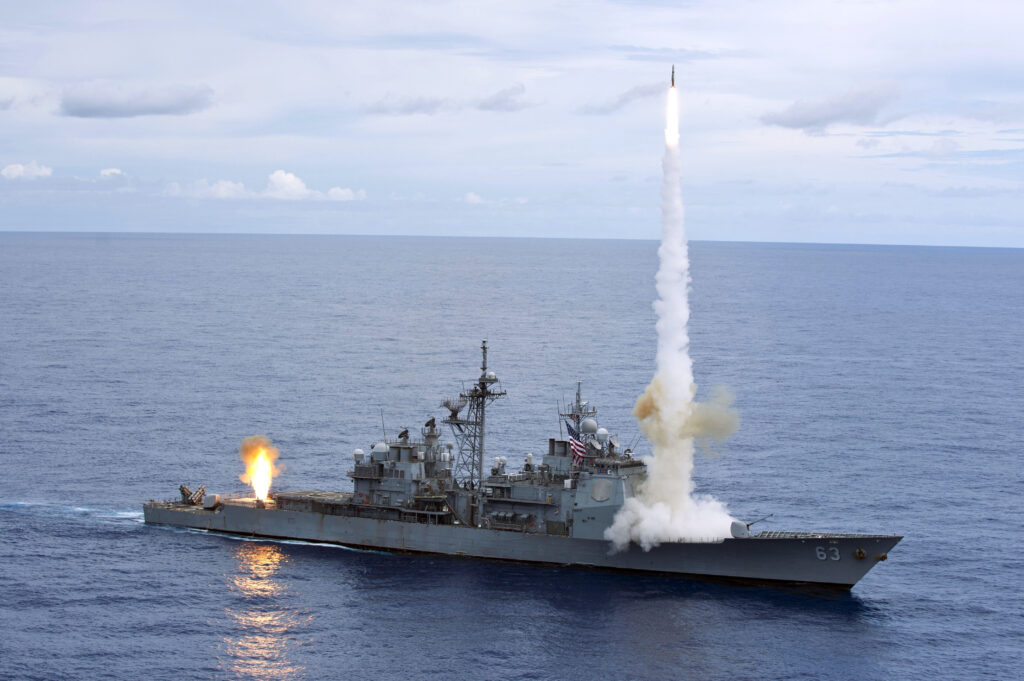Randy Forbes: Navy Has ‘No Credibility’ On Cruisers
Posted on

Rep. Randy Forbes
WASHINGTON: The cruiser war continues. With House seapower subcommittee chairman Randy Forbes declaring the Navy has “no credibility” when they promise to modernize aging Ticonderoga-class cruisers, House Republicans and Navy leaders are accelerating towards a public collision.
Last week, Forbes rolled out legislation requiring the Navy to modernize the cruisers twice as fast as planned, in just two years per ship instead of four. On Tuesday, the Chief of Naval Operations urged Congress to get rid of Forbes’ provision, saying the faster pace it mandates would cost an extra $300 to $400 million. On Wednesday, the full House Armed Services Committee sided with Forbes against the Navy. Yesterday, Navy Secretary Ray Mabus suggested several ways that Congress could make sure the cruisers got modernized without having to accelerate the pace. This afternoon, Rep. Forbes told me Mabus’s alternatives weren’t good enough.

Navy Sec. Ray Mabus
“I think he misses the point,” Forbes told me when I summarized what Mabus had said. There are things the Navy could do to give Congress confidence on cruiser modernization, Forbes said, but they aren’t the measures Mabus suggested yesterday.
“There are two steps they could have taken,” Forbes said. “One could have been to start to do the modernization.” So far, work hasn’t begun. “The second thing they could have done is show that they’ve put money in the FYDP [Future Year Defense Plan]. They can’t come over here to us and say, ‘oh yes, it’s our plan to do this,’ but we’re not going to put it in the five-year FYDP.”
Cruiser upgrades are paid for from a special Ship Modernization, Operations and Sustainment Fund — which was created by Congress in 2013 because it didn’t trust the Navy to spend money from its regular accounts on the Ticonderogas. SMOSF (rhymes with “Joseph”) will run out in 2018 or 2019: ’18 on the faster two-year-per-ship plan Forbes prefers, ’19 on the slower four-year-per-ship plan the Navy prefers. Both date are within the five-year planning window of the current FYDP, so either way, the Navy’s five-year budget plan should show an infusion of money to replenish the fund and finish the work on the remaining cruisers — but it doesn’t.
“They have no credibility,” Forbes said. “They’ve got to show where they’ve put some money to do it.”
Of course, there are political reasons for the Navy not to commit the money. I’ve heard two main ones from knowledgeable sources. First, it could be a ploy to make Congress cough up the money as a plus-up to the Navy budget: You want the cruisers so darn much, you find a way to pay for ’em, because we aren’t cutting any of our other programs to do it.
Second, it could be a signal the Navy wants to reopen the whole issue of the modernization timeline. The Navy’s original plan wasn’t to modernize a few cruisers at a time, taking four years per ship. It was to take 11 out of service at once and slowly modernize them over 11 years. The service estimates this slow-motion modernization would save some $4.5 billion badly needed for top-priority programs like new nuclear-missile submarines and aircraft carriers. It’s a plan that Navy leaders still say is their first choice.
“The Navy wants to continue the discussion on CG [cruiser] modernization and advocate for the PB-15 plan to modernize 11 CGs over a phased modernization period [of 11 years],” a defense official told me. “The CNO’s letter to Congress clearly articulates the benefits for the Navy’s proposal and Secretary Mabus indicated the service would welcome congressional language that held the Navy accountable for executing its original plan.”
But Forbes thinks the Navy proposals are simply ways to slow-roll Congress until the admirals can scrap the aging and expensive-to-operate warships. After all, in past years, the Navy had proposed retiring up to seven cruisers to save money for higher-priority programs.
“They really don’t want to do the modernization,” Forbes told me. “What the Navy really wants to do is what they did from day one: They want to take seven of these cruisers out of commission and destroy them.” When Congress rejected that proposal, he said, “then they came back with this Disney type of fairy tale[:] ‘What we meant to say is we don’t want to kill them, we just want to put them in a deep sleep.'”
Forbes thought the Navy’s 11-year modernization plan was a backdoor attempt to decommission the ships. He thinks the current four years-per-ship plan is still too slow and leaves the Navy too much room to slow-roll Congress. That’s why he wants the acceleration to two years per ship: It will force the Navy to get started.
The Navy argues that going from four years to two doesn’t give the shipyards enough leeway to manage their workflow, resulting in lower efficiency and higher costs. Forbes doesn’t agree and says the shipyards don’t either: “The shipyards are not buying what they’re trying to sell there,” he told me, “[but] they [the Navy] right now are putting pressure on these yards not to say what they can do with these cruisers.” If the Navy opens the bidding to yards on both coasts, there should be someone somewhere who can do it efficiently and inexpensively.
“If you want to just do away with the cruisers, we will save money,” Forbes said. “But strategically you pay an enormous price.”

Cruiser USS Cowpens
Subscribe to our newsletter
Promotions, new products and sales. Directly to your inbox.
